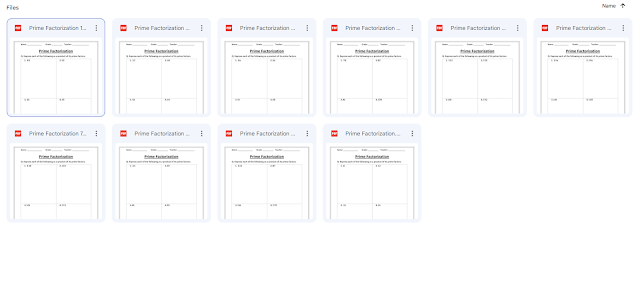Inquiry – Based Learning (IBL) is another highly effective approach that promotes active, student-centered learning. It involves students investigating questions, problems, or scenarios, often with less direct instruction from the teacher, which encourages curiosity, critical thinking, and deeper understanding. Like Project – Based learning, Inquiry – Based Learning is highly beneficial for students, but it focuses more on the process of questioning, exploration, and discovery. Here are some of the key benefits of Inquiry – Based Learning:
1.
Encourages
Curiosity and Active Learning
·
How: IBL begins
with a question or problem that students explore, often driven by their own
curiosity. Instead of passively receiving information, students actively engage
in seeking answers.
·
Benefit: This encourages
a natural curiosity about the world and helps students develop a love for
learning, as they feel empowered to investigate subjects that interest them.
2.
Develops
Critical Thinking and Problem-Solving Skills
·
How: Inquiry –
based learning involves higher – order thinking processes such as analyzing,
synthesizing, and evaluating information to draw conclusions or solve problems.
·
Benefit: Students
learn to ask deep questions, challenge assumptions, and approach problems
systematically – skills essential for lifelong learning and problem – solving in
real – world contexts.
3.
Promotes
Independent Learning and Student Autonomy
·
How: In IBL,
students take responsibility for their learning by identifying what they need
to know, how they will find the information, and how they will apply their
findings.
·
Benefit: This
fosters independence and self – directed learning, which are crucial skills in
higher education and the workforce, as students learn how to seek out resources
and manage their own learning process.
4.
Improves
Research and Information Literacy Skills
·
How: Inquiry –
based learning often requires students to gather and evaluate information from
various sources. They may need to perform experiments, conduct surveys, or find
reliable resources online.
·
Benefit: Students
develop important research skills, including the ability to discern credible
sources, collect data, and synthesize information into coherent conclusions,
preparing them for academic research and everyday problem – solving.
5.
Deepens
Understanding of Concepts
·
How: Rather
than memorizing facts, students explore concepts through inquiry,
experimentation, and investigation. They learn by making connections between
ideas and applying knowledge to new situations.
·
Benefit: This idea
to a deeper, more meaningful understanding of subject matter, as students not
only learn what something is but also why and how it works.
6.
Enhances
Communication and Collaboration Skills
·
How: Often, IBL
involves group work where students share ideas, debate viewpoints, and
collaborate on finding solutions or answers.
·
Benefit: These
experiences improve communication skills, encourage teamwork, and help students
articulate their thoughts clearly while considering other perspectives – skills
essential in both academic and professional settings.
7.
Foster
Lifelong Learning and Inquiry Mindset
·
How: By constantly
questioning and seeking answers, students develop a mindset of curiosity and a
desire to learn that extends beyond the classroom.
·
Benefit: Inquiry –
Based Learning instills the habit of questioning and exploring, which are foundational
to lifelong learning and adapting to new challenges in life and work.
8.
Differentiation
and Inclusivity
·
How: IBL allows
for flexibility in how students approach leaning. They can ask questions based
on their level of understanding and pursue answers at their own pace and using
methods that suit their learning styles.
·
Benefit: This makes
learning more inclusive and personalized, catering to diverse learners,
including those with different abilities and interest, as students engage with
material in ways that are meaningful to them.
9.
Real –
World Application and Relevance
·
How: Inquiry –
based learning often revolves real – world issues or problems, encouraging
students to make connections between their learning and its application in
everyday life.
·
Benefit: Students gain
a sense of relevance and purpose in their learning, as they see how the
knowledge they acquire can be applied to real – world situations, make learning
more meaningful.
10. Improve Retention and Transfer of Knowledge
·
How: By
actively engaging in the learning process and discovering answers on their own,
students are more likely to remember and understand the material in the long
term.
·
Benefit: When
students are part of the discovery process, they better retain the information
and are more capable of applying it in new situations or contexts.
11. Support Growth Mindset
·
How: Inquiry –
Based learning often involves trial and error, with students facing challenges
or even failure as part of the process.
·
Benefit: This
promotes resilience and a growth mindset, where students learn that mistakes
are part of learning, and that persistence leads to success, fostering
confidence in their abilities to tackle difficult problems.
12. Increase Engagement and Ownership of Learning
·
How: When
students are encouraged to ask their own questions and pursue their own lines
of inquiry, they become more invested in their learning.
·
Benefit: This sense
of ownership leads to greater engagement, as students feel that the learning is
meaningful and relevant to their interests and experiences.
Conclusion:
Inquiry – Based Learning (IBL)
offers significant benefits for students, including the development of critical
thinking, problem – solving, research, and independent learning skills. It
encourages mindset of curiosity and exploration, which helps students become
lifelong learners. By making learning more relevant and engaging, IBL help
students connect classroom concepts to real – world problems, fostering deeper
understanding and long – term retention of knowledge.
In summary, IBL is not just about
finding the “right answer” but about nurturing a process of inquiry,
exploration, and critical thinking that prepares students for the complexities
of the world they will face.
%2001.PNG)
%2002.PNG)
%2003.PNG)
%2004.PNG)
%2005.PNG)
.PNG)
.PNG)
%2001.PNG)
%2002.PNG)
%2003.PNG)
.PNG)
.PNG)
.PNG)



